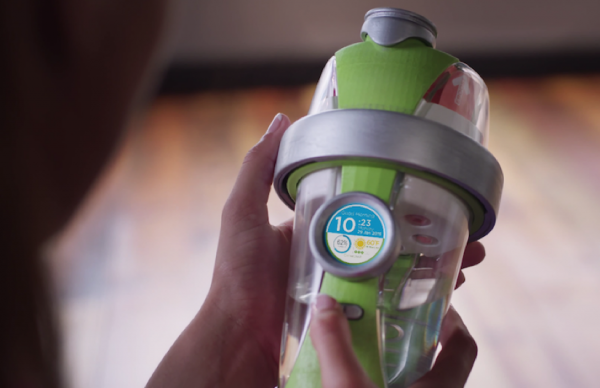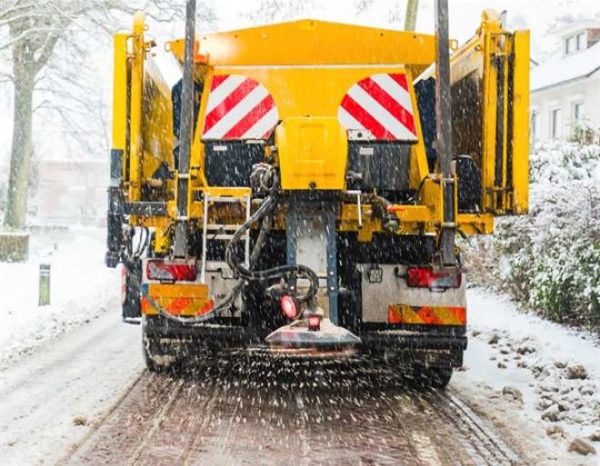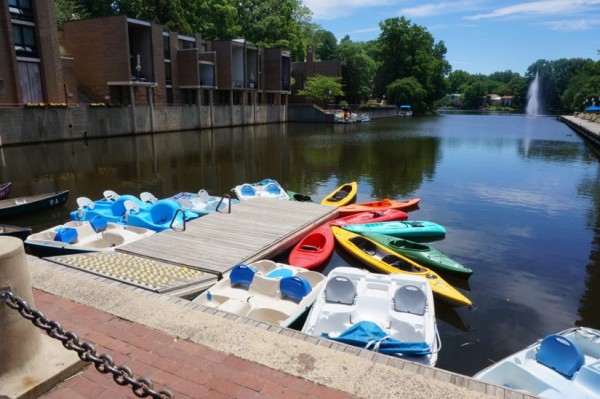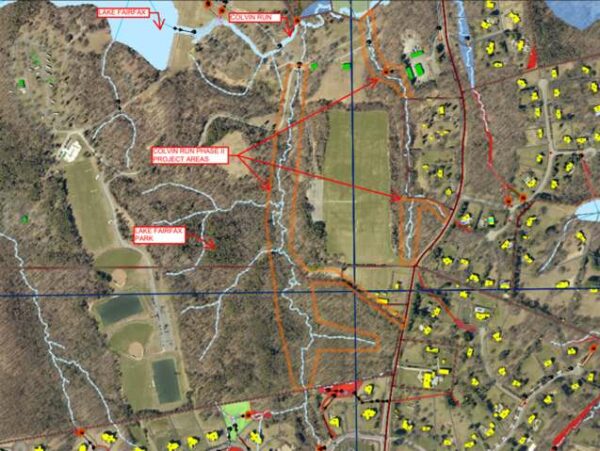
Plans to counter the ongoing degradation of Colvin Run at Lake Fairfax Park in Reston are in the works, but much like climate change and the development that have contributed to the stream’s erosion, it may take some time for them to become visible.
The Fairfax County Department of Public Works and Environmental Services (DPWES) is currently working on the final design for a second phase of its Colvin Run at Lake Fairfax Park stream restoration project, a department spokesperson confirmed to Reston Now.
Phase II of the project will focus on restoring approximately 5,000 feet of an unnamed tributary that feeds into Colvin Run. The project’s first phase addressed 2,219 feet of a channel downstream of the Lake Fairfax spillway and was completed on Aug. 8, 2017, according to the DPWES stormwater improvement projects map.
“The primary goal for both projects is to improve water quality,” DPWES spokesperson Sharon North said in an email.
According to DPWES, restoring Colvin Run is necessary to reduce stream bed and bank erosion, enhance the natural habitat, maintain channel connections within Lake Fairfax Park, and improve the water quality by removing nitrogen, phosphorus, and Total Suspended Solids.
The issues that the stream is experiencing stem from a combination of increasing development in the area and the growing intensity of storms.
“Colvin Run and its tributaries are downcutting, widening and re-aligning in response to hydrologic changes after upstream development and the increased intensity and frequency of storm events,” North wrote. “This channel evolution results in soil erosion, habitat degradation and decreased water quality.”
The two phases of the Colvin Run project were determined by a scoping team with input from engineers, ecologists, landscape architects, construction managers, arborists, and other experts who assessed the area’s current conditions as well as “the potential for ecological and water quality improvement,” North says.
Colvin Run Phase I involved raising the channel’s elevation, installing boulder grade control structures that imitate bedrock outcroppings to prevent future erosion, and adding native vegetation to help stabilize the soil and surrounding habitat.
For Phase II, North says the design will call for stone and wood grade control structures to create pools, riffles, and “a base-flow channel” to help the channel and floodplain capture excessive sediment that flows in from upstream.
In a May 26 update, the project website says completion of the final design and approval of construction for Phase II are expected to come this summer, but DPWES did not respond by press time when asked whether that is still the case.
Construction on the project isn’t scheduled to begin until the summer of 2023, depending on future budget availability.
“A gap in time between the completion of design and the start of construction for a project is normal,” North said, noting that stormwater management projects typically need to get separate authorizations for design and construction.
Construction on the project’s second phase carries an estimated cost of $3.2 million that would be supported by Fairfax County’s Stormwater Service District tax.
Anticipated impacts from construction include trail closures, trail detours, noise, and increased traffic from trucks delivering equipment and materials. Construction vehicles will access Colvin Run from Lake Fairfax Park off of Lake Fairfax Drive and Hunter Mill Road.
Map via Fairfax County Department of Public Works and Environmental Services
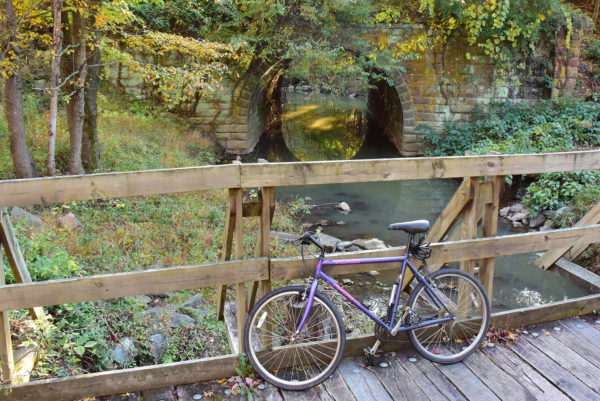
(Updated at 7 p.m.) A stream project that could help reduce pollution in the Chesapeake Bay is getting additional money from Fairfax County.
A $1.2 million contribution from the county will be upped to $1.4 million, thanks to the Fairfax County Board of Supervisors’ approval on Tuesday (June 8). The project will restore part of Sugarland Run by the Washington & Old Dominion Trail in Herndon.
“Upon completion of the design, the County will grant the Town with an additional $1 million for construction,” county staff said in a report to the board.
Herndon town officials say the project will restore a portion of the body of water known as Sugarland Run South between the trail crossing and approximately 1,200 linear feet north.
It comes amid a corrective measure from the U.S. Environmental Protection Agency to limit pollution by mitigating nitrogen, phosphorous, and sediment levels to improve water quality in the Chesapeake Bay region.
The town already received $200,000 from the county through a 2018 agreement, but an additional $201,800 was needed to complete the design phase. The town plans to use its staff to carry out the project.
“Under the amended agreement, the County has the discretion to pay construction cost overruns, but in an amount not to exceed 10 percent of the total estimated Project cost,” county staff also said.
Herndon is working with Vienna and the county to meet the region’s limits on pollution levels known as the Chesapeake Bay Total Maximum Daily Load.
Work to be completed includes re-planting vegetation and restoring a portion of the stream near the W&OD Trail, among other changes, Reston Now previously reported.
Herndon officials didn’t immediately return Reston Now’s requests for comment.
Herndon residents will start paying a little bit more for water and sewer services this summer.
On Tuesday (April 27), Herndon Town Council approved a 1.5% rate increase on water and sewage services for the 2022 fiscal year, which starts on July 1. According to the town, this was necessitated by increasing commodity costs that Fairfax County is charging the town for water and sewer services.
For sewer services, rates are going up from $6.19 to $6.28, or nine cents per one thousand gallons. For water usage, rates are going up from $3.16 to $3.21, five cents per a thousand gallons. For water usage during peak periods (often during the summer), rates will rise eight cents per one thousand gallons, going from $5.38 to $5.46.
Town staff said at the public hearing that these increases would raise the water and sewer bills for a “typical” Herndon household — defined as a family that uses 5000 gallons per month — by $2.27 per quarter.
However, Herndon residents’ quarterly water bill will still remain among the lowest in the region, with Fairfax County, Loudoun County, Fairfax City, Vienna, and Leesburg residents all paying more.
The increase will generate about $97,000 in revenue for the town that will go toward paying commodity costs, along with other operating expenses, funding for capital improvements, and system expansions.
According to data compiled by town staff, since 2006, the town has had more water and sewer expenses than generated revenue, meaning that Herndon has been losing money — as much as $2 million in some years — providing water and sewer services to residents.
The gap was closed in 2020, but town staff are projecting that will no longer be the case in fiscal years 2021 and 2022.
Even with the rate increase, the town is projected to operate at a $217,600 loss for water and sewer services in fiscal year 2022.
Fairfax County has increased both sewer and water rates steadily for a number of years and is projected to continue doing so.
Along with the newly approved rate increase, the town will also conduct a study early in FY 2022 about adjusting rates going forward.
“Water is one of the most precious resources out there, and will eventually be more valuable than petroleum,” Herndon Mayor Sheila Olem said.
Photo via Rudy and Peter Skitterians/Pixabay
It’s time for Fairfax Water’s annual flush, meaning the fire hydrants are flowing and the water might smell a little funny.
Every year, water companies flush their systems in order to clean out and remove sediment from water mains and pipes that have accumulated. This sediment occurs from internal corrosion as well as natural build-ups of iron and manganese.
It also ensures that chlorine contraction levels, which disinfect the water, remain steady since chlorine degrades in water over time.
The flush involves opening up fire hydrants and allowing water to flow freely. It may look like wasting water, but it ensures that sentiment, chlorine, and other materials are flushed out.
During this short period of time, Fairfax Water switches from using combined chlorine to free chlorine as their primary disinfectant.
Most of the year, combined chlorine — or chloramines — are used to treat drinking water. Produced by a chemical reaction between chlorine and ammonia, it’s not as effective as free chlorine in disinfecting water, but it can stay in the water longer.
Free chlorine acts faster than combined chloring to break up sediment, but degrades in a shorter period of time.
The use of free chlorine can also lead to the water tasting and smelling funny.
So, if you are taking a big gulp out of the tap and it tastes like pool water, that’s why.
If you or someone in your household is particularly sensitive to this taste and smell, storing an open container of drinking water in the refrigerator will allow the chlorine to dissipate.
Drinking water does have a shelf life, though, so it should be switched out regularly.
At the levels used in drinking water, both combined and free chlorine are considered safe by the Centers for Disease Control and Prevention and Environmental Protection Agency .
All of this flushing began at the end of March and is expected to run until June 14 for most of Fairfax County.
Nearly 2 million people in Northern Virginia get their water from Fairfax Water, including nearly all of the county and the towns of Vienna and Herndon. It is Virginia’s largest water utility company and one of the 25 largest in the country.
Both Herndon and Vienna get their water “wholesale” from the company, meaning a third party or utility has the right to distribute water but not have the capability to treat their own water.
Herndon’s Department of Public Works does participate in the annual flush as well, opening up hydrants in both residential and commercial areas.
Fairfax Water also highly encourages commercial and residential property owners to flush their system if they’ve had to shut it down for an extended period of time during the COVID-19 pandemic. A thorough flushing is needed to clean out water that may have been sitting dormant in plumbing.
Water that remains stagnant for as little as two days can have mold, leeching, and other hazards in it that can lead to illness.
Photo via Rudy and Peter Skitterians/Pixabay
Life Fuels, a Reston-based startup that sells smart water bottles, is shutting down after seven years of business.
In a LinkedIn post released on Sunday, founder and CEO Jonathon Perrelli said the COVID-19 pandemic had a crippling effect on the business. LifeFuels offered a smart water bottle that keeps track of the drinker’s water, mineral, and vitamin intake through an integrated app.
The company sold pods that would inject ingredients into the water. Each bottle retailed for 179. Like a Keurig coffee maker, the bottle had plastic pods with nutrients and vitamins to mimic the flavor of a sports drink.
“The world of startups is an onerous one in the best of times. The challenges that many small businesses have faced with the pandemic over the past year has been crippling and LifeFuels is no exception,” Perelli said.
Although the LifeFuels chapter has ended, Perrelli said his team is exploring alternative scenarios for its platform. But its bottles and pods are no longer available.
“The dream of LifeFuels is ending but the spirit of entrepreneurship lives on,” he wrote.
Photo via Life Fuels
The Water Mine Family Swimmin’ Hole at Lake Fairfax Park has been named one of the region’s best waterparks by Washingtonian Magazine.
The publication, which made different selections based on the type of waterpark, wrote that the water mine was one of the best in the area for children between ages 7 and 11.
“Older children beeline for the three lengthy, winding water slides standing three stories tall,” the magazine wrote. “There’s also a log walk, a lazy river, more slides, and a splash area for younger kids.”
The Fairfax County Park Authority wrote the following about the waterpark:
The Water Mine captures the excitement of the Old West’s Gold Rush with themed attractions including more than an acre of slides, flumes, sprays, showers, floatables, and an interactive water playground. Kids can careen off covered wagons, float on wild animals, dash through showers tipped from water-filled ore carts, or float along the Rattlesnake River, a 725-foot lazy river. The centerpiece is Pete’s Peak, a craggy mountain featuring water slides of various size and intensity.
Although the water mine will be open tomorrow (Friday) from noon to 6 p.m., it goes to the dogs with a season-ending event on Saturday (September 7) to benefit the Fairfax County Animal Shelter and the Fairfax County Park Foundation.
Photo via FCPA
Two Reston residents were killed during a jet skiing accident on South River in Maryland last week.
Elizabeth Howle, 48, and her husband, Jeffrey Sessions, 53, were killed last Wednesday (July 3), according to the Department of Natural Resources.
Their bodies were found in Edgewater, Md. around 5:15 a.m. that day. Firefighters came to the scene after receiving reports about two missing jet skiers in the area.
Officials said that the couple hit a day marker and that they were not wearing a life jacket. Their 2019 Sea-Doo personal watercaraft was partially submerged when it was found.
Sessions was the CEO of Red River, an IT company that contracts in state, local and education markets.
The company issued a statement following the public announcement of Session’s death.
“The entire Red River family mourns this loss. Jeff led our company with intelligence, humor, integrity and passion. The contributions he made to the transformation of our business cannot be measured. Jeff’s impact on Red River, our people and the communities we serve will forever be felt. On behalf of our management team and employees, we extend our deepest sympathies to Jeff’s family.”
Fairfax County Fire and Rescue wants to remind locals that fire sprinklers can help save lives and decrease damage when a fire breaks out.
The fire department has been highlighting how firefighters recently responded to a call and found a dryer fire in a Herndon apartment doused by sprinklers.
The fire broke out on Sunday (March 10) in a four-story apartment building in the 2300 block of Rolling Fork Circle in Herndon. The one person who was home at the time of the fire was not injured, the fire department said.
Fairfax County Fire and Rescue said the fire caused about $500 in damages.
The fire department has been sharing the story of how the sprinklers calmed the fire, along with a U.S. Fire Administration video that details the multiple benefits of sprinkles.
The video says sprinklers:
- reduce fire damage by 97 percent
- increase the chance of survival by 82 percent
- give people more time to escape
- help keep firefighters safe
The video also includes an example of how sprinkles manage fires and highlights that insurance discounts may also be available.
Image via Google Maps
Road salt may have a hand in the recent spikes of chloride concentrations in Reston streams, along with a slew of environmental issues.
Doug Britt, a member of the Reston Association’s Environmental Advisory Committee, recently examined environmental harm caused by de-icing agents including sodium chloride and dove into results from monitoring Difficult Run and Sugarland Run with fellow Restonians.
Britt wrote that measurements of the chloride concentrations at the two sites were taken before this year’s first storm and then again after road salting for the first two snowstorms. He found that the chloride concentrations at both sites increased fourfold from the first measurement, which he said was within the normal range for North American streams.
The monitoring efforts were a part of a larger program initiated by the Izaak Walton League of America to encourage “citizen scientists” to examine local streams before and after road salting.
Britt, a Virginia Master Naturalist member, wrote that higher chloride concentrations in lakes and ponds can halt the bottom and top waters from mixing, which then leads to less oxygen in deeper areas. Too much chloride can reach toxic levels for aquatic life.
“Although there are a number of alternative de-icing agents available, sodium chloride as a brine solution appears to have the least negative environmental impact when considering the full life cycle of its production and application,” the report says. “Sodium chloride, nevertheless, can generate a host of environmental problems.”
Britt’s report analyzed several of those impacts, which included:
- water quality
- soil
- pets
- wildlife
- roadside vegetation
- infrastructure
Britt says that these environmental concerns aren’t unique to Reston.
“Chloride concentrations in Fairfax County surface waters have steadily increased for the past 25 years, consistent with the use of de-icing agents,” Britt wrote.
Britt ended his report on information about the next step: action.
The Virginia Department of Environmental Quality is currently developing a Salt Management Strategy planning process aimed at keeping chloride levels below the amount that starts to ruin the water, the report says.
The department also had had in a 2018 report included suggested options to optimize de-icing agents and the way they are applied to reduce environmental impacts, Britt wrote.
“Meanwhile, as individuals and business owners we should be cognizant of the potential environmental impacts associated with the application of de-icing agents,” Britt wrote, adding that it is important to balance public safety with environmental damage.
Photo via Reston Association
The Reston Association’s Board of Directors received a summary last week of the second annual report about the state of the environment in Reston.
Doug Britt, a Virginia Master Naturalist and the director of Reston Association’s first Reston Annual State of the Environment Report, gave an overview of the 2018 Annual State of the Environment Report (RASER) at a Reston Association meeting on Thursday (Nov. 15).
The study is intended to give readers a better understanding of Reston’s current environmental conditions in order to provide a baseline against which future changes to the environment can be measured.
The second RASER updates all of the topics addressed in the first one, along with adding new topics and recommendations. The results of the first RASER arrived in January after it was published last July.
The report has 11 new recommendations, which include the following:
- Schedule dredging when nuisance aquatic weeds are dormant
- Enforce shoreline distribution regulations for cluster shoreline properties
- Create a plan to alert residents about lake safety issues
- Assess whether de-icing salts are affecting water quality
- Partner with organizations to conduct native plant education programs, to use edible plants in landscaping and to distribute leftover food
- Determine baseline noise levels throughout parts of Reston
The report also has an analysis of 19 environmental attributes — rating them on a scale of green (good), yellow (fair), red (poor) and undetermined — and adds in excerpts from Fairfax County’s Environmental Vision Document. “I feel confident as a community that we are way ahead of a lot of other county committees in meeting the revised vision document of the county,” Britt said.
Attributes that got a “green” rating include air quality, drinking water, wastewater treatment, hazardous and toxic waste and environmental education.
Streams received a bump from “red” to “yellow” status this year after more diversity than expected was found in them over the summer, Britt said, adding that almost half of Reston’s streams have been restored. Lakes and ponds, urban forests, landscaping, wildlife management and light pollution also got bucketed in the “yellow” rating.
Attributes that lacked enough data for an adequate rating included wetlands, mammals, reptiles and amphibians, invertebrates and noise pollution.
Only one received the “red” designation: stormwater management. “When Reston first developed in the early 60’s and 70’s, the stormwater was typically shunted from development sites into nearby receiving sites as quickly as possible trough impervious surfaces,” Britt said. “This resulted in the streams not being able to handle the capacity of storm surges.”
South Lakes District Director Julie Bitzer said at the meeting that she has had a lot of residents talk to her about erosion and stormwater management, because of the amount of rain this year. “I think that is something we need to look at,” she said.
Britt encouraged the board to move away from the “band-aid approach” of expensive lake dredging to remove sediment and instead focus on soil erosion prevention, which he said will be a more cost-efficient choice for improving streams and water quality issues. He also suggested that the board empower residents to help by using low-technology solutions like rain gardens and also set higher standards for developers.
Britt also provided a breakdown of the progress of the 61 recommendations made in last year’s report. Two have been completed, while the rest include 14 lacking progress, 20 with limited work done and 25 with “substantial” progress.
“I don’t want anybody to get the idea that because only two were fully completed, that this designates some ignoring of these recommendations, because very few of the recommendations were what I would call ‘one and done,'” he said.
The three highest priorities should be protecting Reston’s urban forests, improving surface water quality and maintaining “robust” education and outreach programs, Britt said.
RASER recommendations will continue annually, while updates will come every other year, Britt said. The next updated text is expected to be released in 2020.
Photo via Reston Association/YouTube
Reston Association is holding a raffle for abandoned and donated boats this week. In order to enter, individuals must email [email protected] with the subject line “BOAT RAFFLE” by Thursday (August 24).
The email must contain the name of the entrant, address and phone numbers. Entries are limited to one per household. Proof of residency and a general access permit application are required to be eligible to participate.
Winners will be randomly selected the week of August 27. Those selected can pick a boat on a first-come, first-serve basis. All boats must be purchased as they are. The raffle and boats are free.
Reston Association is, however, encouraging donations to Friends of Reston to help fund watershed education program. The organization is a non-profit entity that aims to support RA’s charitable, educational and scientific purposes, according to its website.
File photo
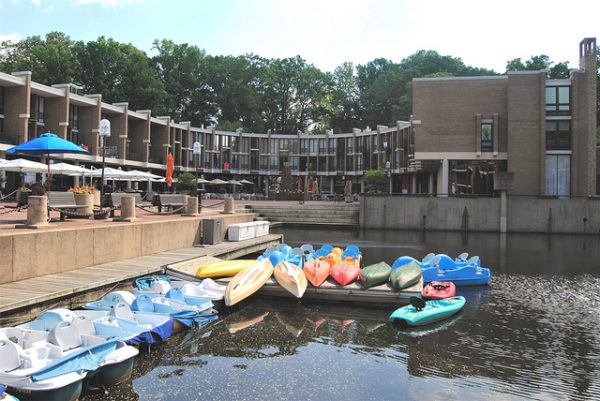
A Reston Association working group created to analyze rules governing lakes, docks and boats kicked off it meetings on June 13 (Wednesday).
RA’s board of directors formed the group on March 22 in response to residents’ concerns about outdated boating policies, enforcement issues and overall usage of local lakes. The group will provide recommendations to the board in November.
During the first meeting, members received information on Reston’s lakes, as well as the type and number of boats and docks currently allowed.
The group’s objectives include identification of the environmental impact of docks and boats, a review of current rules and policies and whether or not rules infringe on lakeside property owners’ use of their properties.
The presentation given to the working group is linked here.
Flickr pool photo by vantagehill
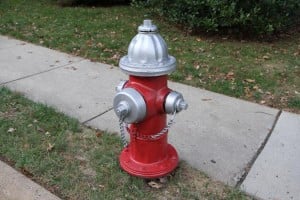 If your tap water has a funny taste to it in the next few weeks, don’t be alarmed.
If your tap water has a funny taste to it in the next few weeks, don’t be alarmed.
Fairfax Water is warning customers ahead of time that it is spring hydrant flushing season.
Each spring, Fairfax Water flushes its water mains by opening fire hydrants and allowing them to flow freely for a short period of time.
For most of the county, this will start in late March.
So why the funny smell and taste? In the spring, Fairfax Water slightly changes its water treatment process, switching from using combined chlorine to free chlorine. Free chlorine is quicker acting than combined, which allows it to react with sediments suspended during flushing, officials said in a release.
The chlorine taste and odor in your drinking water happens while free chlorine is washing its way through. Flushing also may result in temporary discoloration and the presence of sediment in the water, Fairfax Water.
But the water is still safe to drink.
“If you are especially sensitive to the taste and odor of chlorine, try keeping an open container of drinking water in your refrigerator,” says Fairfax Water. “But remember, drinking water has a shelf life! Change out the water in your refrigerated container weekly.”
If you have questions about this program or the work being conducted in your area, call Fairfax Water at 703-698-5613.



